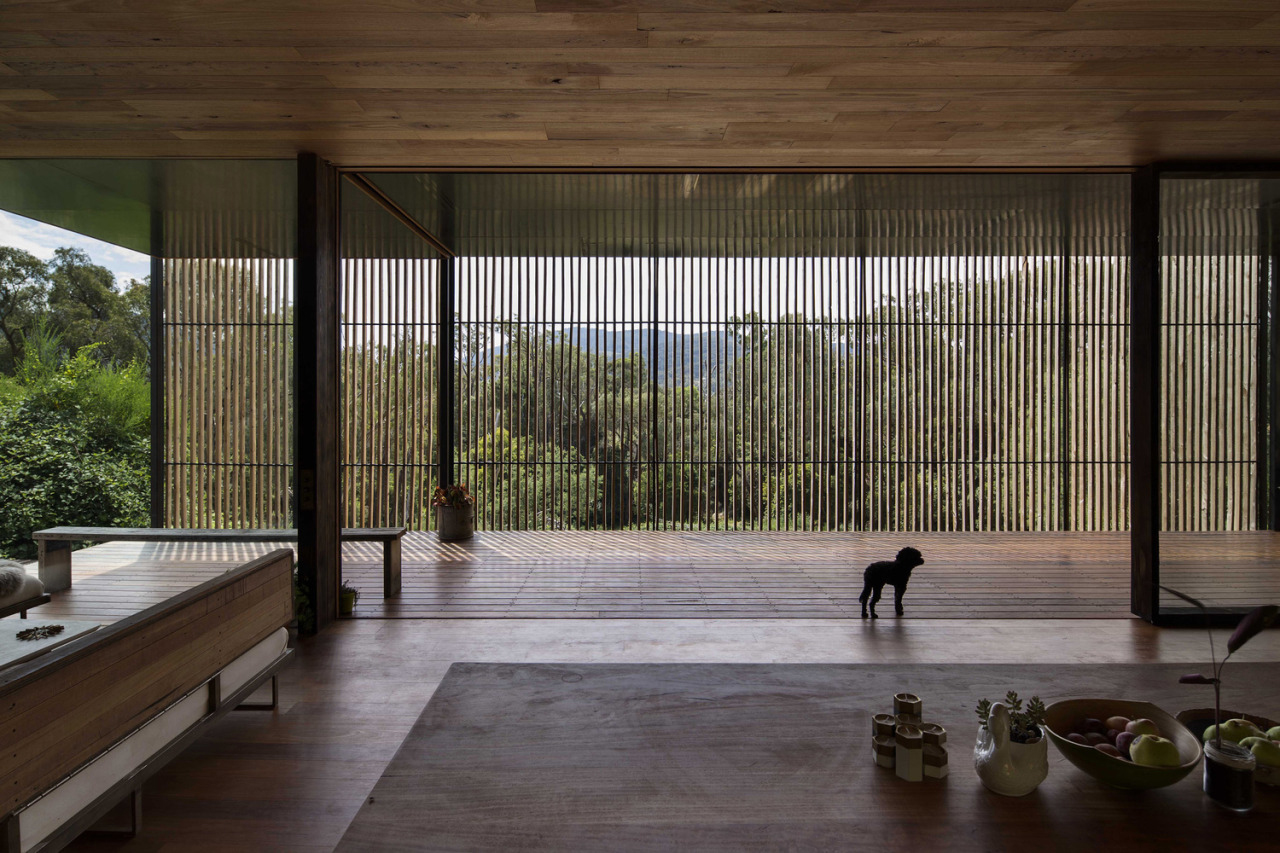Trash to Treasure: Archier Recycles 270 castaway concrete blocks to create modern cliffside home
/Befitting a regionally based sculptor, Sawmill House is a handcrafted upgrade from his existing rather rustic bohemian abode designed by architecture firm Archier. Working closely with the client, whom was a family member, the design developed as a conversation rather than a regimented document. Comprised of 270 one ton concrete blocks, Sawmill House explores the possibility of positively leveraging the thousands of tons of concrete that goes to waste each year.
Leveraging our client’s skill set was a priority. We facilitated this with a simple documentation set a year prior to the start of construction, then slowly developed the design whilst physically working with the client on-site. This design / build approach allowed us to move away from conventional solutions and investigate highly bespoke yet cost effective alternatives. Large sections of the roof and facade could be mechanized, entire walls of glass could pivot, courtyards could be added, custom furniture, joinery and hardware could be designed and manufactured on-site with immediate feedback.
“The Sawmill House hosts our young family of three, who can now live comfortably and safely within the industrial zone. Large operable veranda, screens and doors transform the space to suit various climatic and social conditions, which is crucial to our family who must operate in a diverse and sometimes extreme climate, and direct our home through a spectrum of private retreat to communal hub. Importantly, the civic nature of the design allows the building to function as a design office with a fantastic aspect”. Benjamin Gilbert, client
Each of the one-tonne concrete blocks that form the perimeter of the dwelling’s walls has a story - a bridge, a footpath, a home; and create a patchwork of color and texture across the facades. This texture grounds the building in the site, as the layers of color mimic the sedimentary layers of earth still exposed from the site’s former life as a gold mine before becoming the local sawmill. The untreated rough sawn macrocarpa screens reference the site’s recent history and over time as they pale to grey will settle the building into its perch on the quarry’s edge.
The house has a highly operable envelope that takes advantage of the local breeze that travels up the valley towards the house, passively cooling in the summer months with crossflow ventilation. In the cooler months sun penetration is maximized by rolling back a 14 meter section of openable roof over the deck, allowing the sun to passively heat the dwelling for most of the year.
Photography by Benjamin Hosking
Architecture by Archier
















